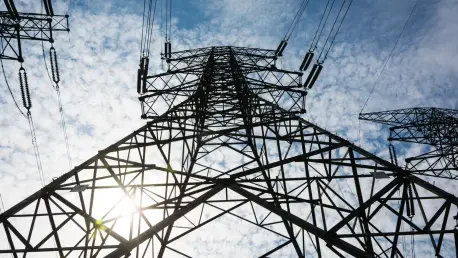In the realm of energy regulation and policy, Christopher Hailstone stands out with his substantial experience in energy management, renewable energy, and electricity delivery. As a Utilities expert, Hailstone offers keen insights into grid reliability and security, crucial in the fast-evolving energy sector. Today, he shares his perspective on the ongoing conflict involving MISO and the role of market monitors in transmission planning.
Can you provide a brief overview of the conflict between the Midcontinent Independent System Operator (MISO) and its independent market monitor regarding transmission planning oversight?
Certainly, the conflict stems from disagreements on the market monitor’s role in MISO’s transmission planning. Potomac Economics, the independent market monitor, criticized MISO’s assumptions used to justify a large-scale, $22 billion transmission expansion. MISO wanted to limit the monitor’s oversight, contending that it overstated needs and benefits. This disagreement prompted MISO to seek a ruling from FERC to curb the monitor’s role in planning oversight.
What specific criticism did Potomac Economics raise regarding MISO’s $22 billion transmission expansion plan?
Potomac Economics challenged the assumptions and calculations underlying MISO’s plan, contending that both the needs and the projected benefits of the expansion were overstated. They pointed out inaccuracies in the cost-benefit analysis, raising alarms about whether the massive investment would truly deliver the promised benefits, thus questioning the foundational justification for the portfolio.
Why did MISO and its transmission owners want to limit the market monitor’s role in transmission planning?
MISO and its transmission owners were concerned that the market monitor’s critical oversight could impede their transmission planning and expansion agendas. Their petition to FERC argued that the market monitor’s involvement should be limited, fearing that extensive oversight could disrupt or delay development projects by introducing additional scrutiny and potential challenges to their justifications.
How did FERC’s decision reaffirm the market monitor’s role in transmission planning oversight?
FERC’s decision highlighted that MISO’s tariff explicitly authorizes the independent market monitor to review and assess any actions impacting market competitiveness and economic efficiency, which includes transmission planning. By reaffirming this role, FERC underscored the importance of third-party scrutiny in ensuring transparent and economically justified transmission planning.
What is the significance of transmission planning in the context of competitiveness and economic efficiency for MISO?
Transmission planning is crucial for maintaining competitive and economically efficient electricity markets. Effective planning ensures that the grid can deliver electricity reliably and at the lowest possible cost, while also supporting new renewable energy sources. Without thorough oversight, there’s a risk of inefficient investment that doesn’t align with market needs or consumer interests, which could lead to unnecessarily high costs for consumers.
Why did the Organization of MISO States and consumer advocates oppose MISO’s petition?
These organizations argued that limiting the market monitor’s role could diminish oversight that safeguards consumer interests. They posited that robust scrutiny ensures that transmission investments are economically sound and don’t inflate consumer utility bills unnecessarily, especially at a time when many struggle with rising energy costs.
FERC Chairman Mark Christie mentioned that transmission costs are a major contributor to high utility bills. Could you explain this in more detail?
Transmission costs have climbed significantly, becoming the largest contributor to rising utility bills. This includes not only upfront capital investments but also the financing costs and other financial incentives—sometimes referred to as “FERC candy”—which can considerably increase the financial burden on consumers. As these costs are passed on to customers, they are a focal point of widespread concern among regulators and consumer advocates.
What is meant by “FERC candy” and how does it relate to MISO’s Tranche 2.1 transmission portfolio?
“FERC candy” refers to the additional financial incentives or benefits that are sometimes approved by FERC for large-scale transmission projects. In MISO’s Tranche 2.1, these added incentives mean that the overall costs exceed the initial $21.8 billion capital estimate, placing an even greater burden on consumers to fund these projects.
Why does FERC Chairman Mark Christie commend the independent market monitor?
Chairman Christie commends the market monitor for bravely critiquing MISO’s assumptions and challenging the justifications for their costly transmission projects. He appreciates the market monitor’s role in defending consumer interests by ensuring project justifications are transparent and economically sound, despite potential pushback from vested interests.
FERC Commissioner David Rosner expressed concerns about expanding the market monitor’s duties. How does he differentiate between a market monitor and an independent transmission monitor?
Commissioner Rosner emphasized that while market monitors play a critical role in reviewing the outcomes of transmission planning, their duties should not extend to performing the functions of an independent transmission monitor, which would involve direct involvement in planning. He stressed maintaining focus on evaluating the impacts and results of those plans, rather than participating in the planning process itself.
How did FERC’s Order 1920 rulemaking on long-term regional transmission planning relate to this dispute?
FERC’s Order 1920 was an attempt to set new requirements for regional transmission planning to enhance efficiency and effectiveness. However, the agency couldn’t agree on mandating independent transmission monitors, leaving the role of market monitors within planning as a point of contention, exemplified by this dispute involving MISO.
What are the potential implications of this FERC decision for the future of transmission planning and oversight in the US energy market?
This decision could mark a pivotal moment, setting a precedent for broader market monitor involvement in transmission planning. It underscores the value of transparency and accountability, potentially prompting more rigorous scrutiny of large-scale energy projects. This could lead to more economically sound planning, better aligning grid development with genuine market and consumer needs.
Do you have any advice for our readers?
Stay informed and engaged. Understand that energy policies and regulatory decisions directly impact utility bills and energy consumption. Advocate for transparency and oversight, ensuring that investments in the energy infrastructure serve the public’s interest, providing reliable and affordable energy for the future.









